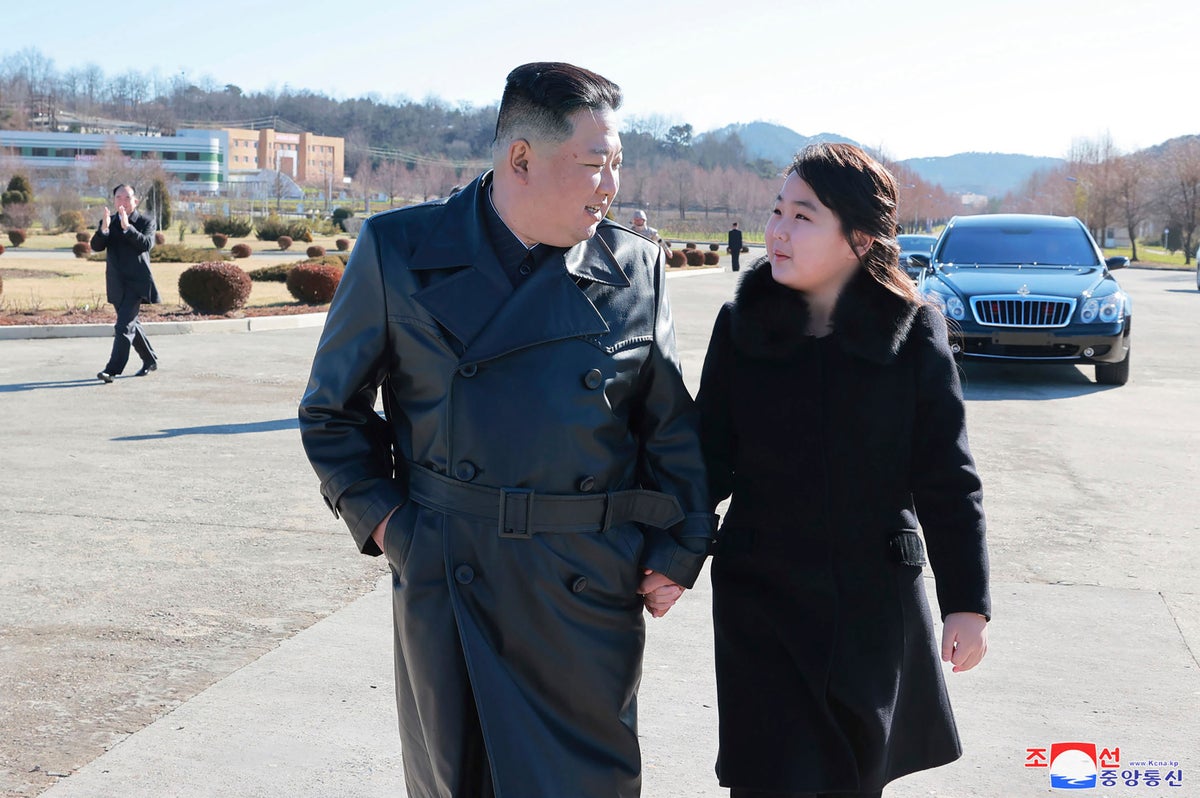
North Korean leader Kim Jong Un’s disclosure of his daughter in recent public events was likely an attempt to show his people that one of his children would one day inherit his power in what would be the country’s third hereditary power transfer, South Korea’s spy service told lawmakers Thursday.
Kim publicly took his daughter to three events in the past few months: a missile launch site, a photo session with weapons scientists and a touring of a missile facility. State media called her Kim’s “most beloved child,” sparking outside debate over whether she’s being groomed as his heir apparent, though she’s believed to be around 9 or 10 years old.
In a closed-door Parliamentary committee meeting, the National Intelligence Service said it assessed that by taking his daughter to public places, Kim aims to show North Koreans his resolve to hold another round of hereditary power transition, Yoo Sang-bum, one of the lawmakers who attended the private NIS briefing, told reporters.
Yoo cited the NIS as believing her public appearance — the first for any of Kim's children — doesn't necessarily mean she will succeed Kim.
South Korean media have said that Kim has three children — born in 2010, 2013 and 2017 — and that the first child is a son while the third is a daughter.
In its earlier assessment after the daughter’s first disclosure in November, the NIS told lawmakers that she is Kim’s second child named Ju Ae and about 10 years old. It told lawmakers at the time that her unveiling at the missile launch site appeared to reflect Kim’s intentions to protect the security of North Korea’s future generations in the face of a standoff with the United States.
Ju Ae apparently is Kim’s child who retired NBA star Dennis Rodman saw during his trip to Pyongyang in 2013. After that Pyongyang visit, Rodman told the British newspaper the Guardian that he and Kim had a “relaxing time by the sea” with the leader’s family and that he held Kim’s baby daughter, Ju Ae.
Kim Jong Un, who turns 39 on Monday, is a third generation of his family that has successively ruled North Korea since its 1948 foundation. He inherited power from his father Kim Jong Il upon his death in December 2011. Kim Jong Il took over power when his father and state founder Kim Il Sung died in 1994.
During Thursday’s briefing, the NIS also said former North Korean Foreign Minister Ri Yong Ho, who was involved in now-dormant nuclear diplomacy with the United States, has been purged, according to Youn Kun-young, another lawmaker who was at the meeting.
If confirmed, it would be the highest-profile such case by North Korea in recent years. In his earlier period of rule, Kim Jong Un engineered a spate of executions, purges and dismissals of senior officials, including the killing of his powerful uncle, in an apparent effort to solidify his grip on power.
Youn quoted the NIS as saying it has not yet found whether Ri Yong Ho was executed. Yoo said the spy agency didn’t explain why Ri was purged.
Career diplomat Ri took part in the 2018-2019 nuclear summitry with the United States over how to exchange North Korea’s denuclearization steps with economic and other benefits. After the second summit between Kim Jong Un and then-President Donald Trump collapsed in February 2019 in Hanoi, Vietnam, due to disputes over U.S.-led sanctions, Ri called a middle-of-the-night press conference and said that Washington had wasted an opportunity that “may not come again.”
South Korea’s spy agency has a spotty record of tracking developments in North Korea. Information about the secretive, authoritarian state is often impossible to confirm.
Japan’s Yomiuri Shimbun newspaper reported earlier this week that Ri was believed to have been executed in 2022. The paper, citing unidentified sources familiar with internal affairs in North Korea, said that there is information that four to five other people with ties with the North’s Foreign Ministry were also executed. It said the reasons for the executions were unknown.







